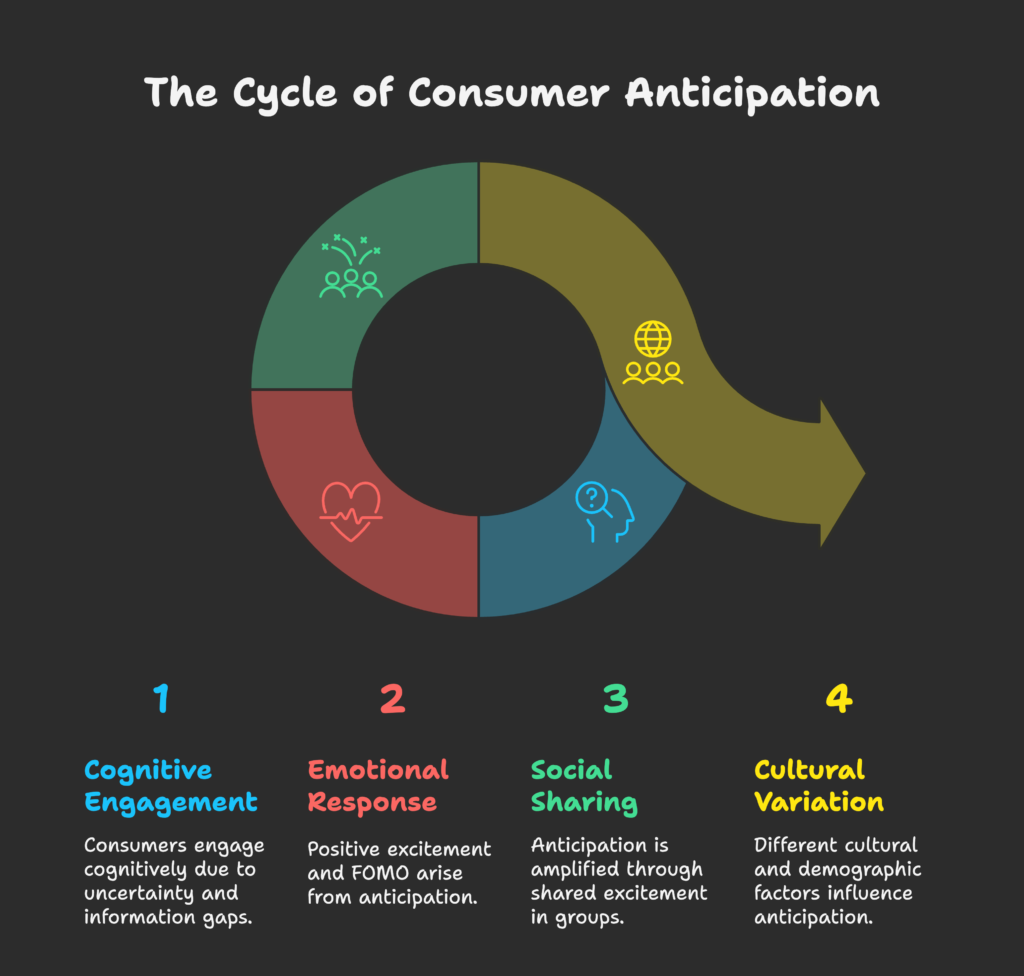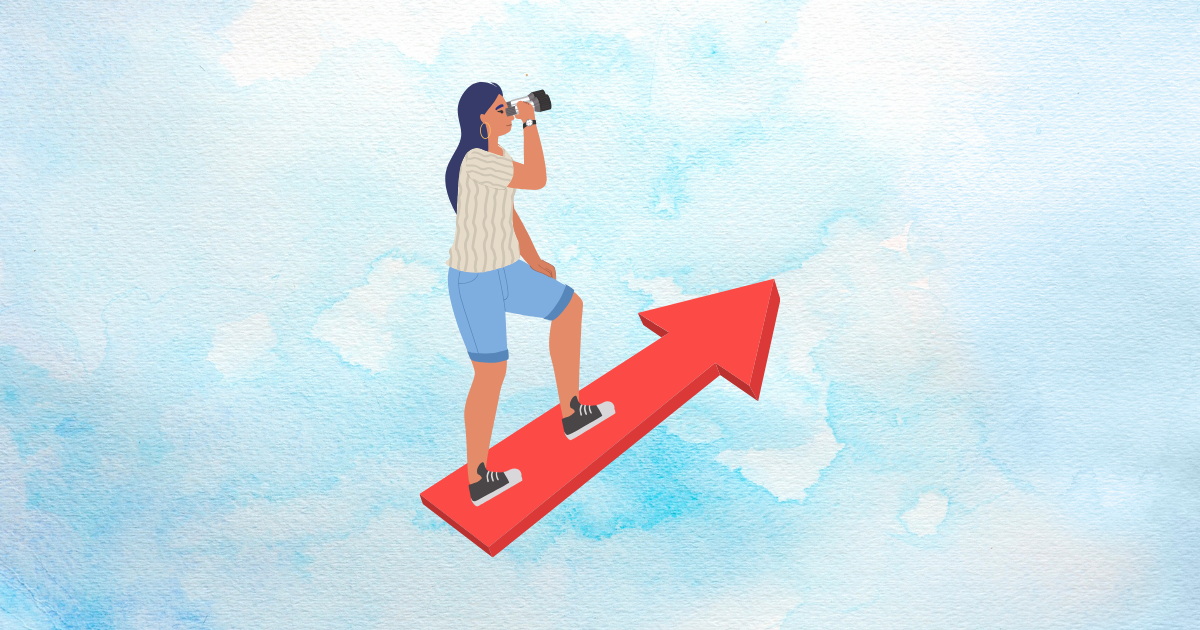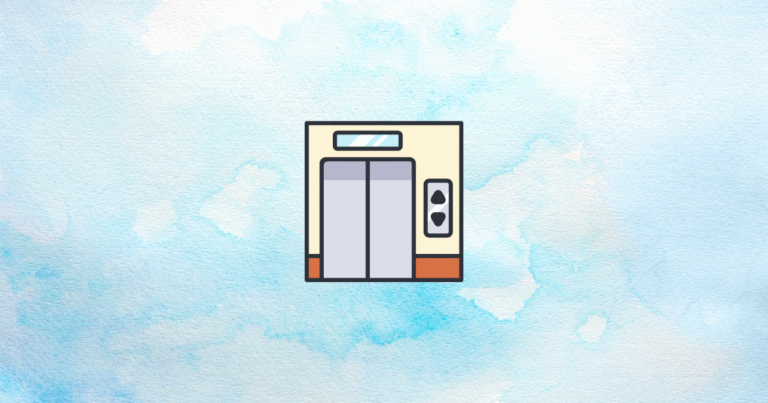Have you ever felt a jolt of excitement right before you open a gift? That sense of wonder and curiosity is the power of anticipation—especially in marketing. By reading this article, you’ll discover how to harness that electric energy to make your product launches more engaging and memorable. Ready to dive into a world where your customers eagerly count down the days until they can get their hands on your latest offer? Keep reading, because by the end of this piece, you’ll have a step-by-step roadmap for creating excitement that drives actual results!
Introduction to Anticipation Marketing
In this section, you’ll see how anticipation marketing works on a fundamental level. We’ll touch on the core definitions and explore how it has played a role in consumer engagement through history. By the end, you’ll understand why anticipation is such a potent tool for boosting interest in your upcoming releases.
Definition and Psychological Foundation
Anticipation marketing is all about creating interest, curiosity, and excitement before a product or service becomes available. Brands use teasers, sneak peeks, and intriguing messages to make people say, “I can’t wait to try this!” Historically, marketers have tapped into people’s natural desire to know what’s coming next—think of movie trailers that leave you eager for opening night. This technique directly connects to how our brains handle excitement, driving higher engagement and recall.
So, now that you know what anticipation marketing means and why it matters, let’s see what’s happening inside our brains that makes this tactic so powerful.
The Neurological Basis of Anticipation
Our brain’s reward system lights up when we expect something exciting. In fact, studies show that anticipation can spark more dopamine release than the actual reward itself. This means that wanting something often brings as much pleasure as getting it. When marketers use teaser campaigns, they tap into that “wanting” phase, making people feel good well before they buy.
Curious about why all this excitement matters for business? Let’s move on to the next topic to see how it can transform your launch results.
The Business Case for Pre-Launch Excitement
Stirring up anticipation helps you sell more on launch day, but it also creates fans who stick with you for the long haul. People who experience positive excitement about a product tend to share it with others, boosting word-of-mouth and loyalty. Additionally, in a crowded market, brands that master anticipation gain a competitive edge by capturing consumer attention early. The value of this attention can lead to better sales, stronger brand communities, and repeat customers.
We’ve covered the basics of anticipation marketing. Next, let’s explore the fascinating psychology behind how consumers react to it.
The Psychology of Consumer Anticipation
Get ready to dive deeper into the mental factors that keep consumers on the edge of their seats. This section reveals what goes on in people’s minds—and hearts—when they’re eagerly waiting for something new.

Cognitive Mechanisms Driving Anticipation
Part of what keeps us engaged is uncertainty. When we don’t know everything about a product, our curiosity grows, and we look for more info. This ties in with the idea of “information gaps”—when something’s missing in our knowledge, we feel the urge to fill it. Plus, how far off a launch date seems (temporal distance) can make a product seem either more abstract or more real, depending on the timing. Our brains also like to simulate future scenarios, imagining the product in our daily lives. That mental “preview” boosts our interest and desire.
Up next, we’ll see how emotions—both good and bad—fuel anticipation even further.
Emotional Components of Anticipation
When we expect something positive, we get excited. But anticipation can also bring a bit of anxiety, like fearing you might miss out on a limited offer—this is where FOMO (Fear of Missing Out) comes into play. On the flip side, feeling anticipation can make you value a product more, because you’ve built up happy thoughts around owning it. Simply put, the anticipation stage can be a fun, emotional ride that heightens the final enjoyment.
But there’s more. Emotions aren’t just personal; they’re often shared. Let’s look at how social factors play a role.
Social Dimensions of Shared Anticipation
Think about how exciting it is when everyone’s talking about the same upcoming movie or phone launch. Anticipation grows stronger when it’s shared by a group. This creates a feeling of belonging—like you’re part of a special club. When people confirm each other’s excitement, it adds social proof that “this is going to be big.” That collective thrill can push more individuals to jump on board.
Now that we see how social interaction influences anticipation, let’s explore how cultural and demographic factors also affect the story.
Cultural and Demographic Variations
Not everyone reacts to pre-launch buzz in the same way. Cultural norms, age groups, and product types can all shift how anticipation is built and experienced. For instance, younger audiences might prefer viral social media teasers, while older generations could respond better to detailed email campaigns. Luxury items often thrive on secrecy and exclusivity, whereas everyday products might benefit from transparent previews.
We’ve uncovered the psychological depths of consumer anticipation. Ready for a brainier angle? Let’s see the neuroscience behind all this excitement!
The Neuroscience of Anticipation and Decision-Making
Welcome to the more scientific side of anticipation marketing. Here, we’ll explore how our neurons fire up when we’re waiting for something exciting—and how marketers can use this understanding to guide consumer decisions.
Neural Circuits Involved in Anticipation
The mesolimbic dopamine system is like the engine that powers your excitement. Meanwhile, the prefrontal cortex helps you imagine future events and weigh the benefits of waiting. Brain scans (like fMRI) show that when we see teasers, our “reward” areas become active, raising our levels of anticipation. At the same time, physical responses (sweaty palms, faster heartbeat) can signal that we’re mentally gearing up for the product or event.
Now that you know which parts of the brain spark anticipation, let’s take a look at the research methods behind these findings.
Consumer Neuroscience Methods and Insights
Researchers use tools like fMRI, EEG, eye-tracking, and biometric sensors to observe how people react to pre-launch materials. For example, tracking eye movement might reveal which parts of a teaser ad grab attention first. EEG can show the emotional intensity of that moment. These insights help marketers refine messages, pinpoint what’s most exciting, and measure the actual impact of their campaigns.
So, how does all this excitement convert into actual sales? The next section shows how anticipation translates into purchase decisions.
The Anticipation-to-Purchase Decision Pathway
When dopamine is flowing, people often form strong intentions to buy. Yet there’s still a gap between “I want it” and actually clicking “Purchase.” Cognitive biases—like overestimating future joy—can play a role in boosting or weakening that final decision. Effective anticipation marketing bridges this intention-behavior gap by keeping consumers engaged and showing them how the product will make their lives better.
Now that we’ve seen the science behind anticipation, let’s switch gears and learn practical strategies for building pre-launch buzz.
Effective Pre-Launch Marketing Strategies
Here, you’ll discover tried-and-true techniques for lighting a spark of curiosity in your audience. By the end, you’ll have a toolkit for creating excitement, building anticipation, and guiding people straight to your offer.
Teaser Campaigns and Sneak Peeks
Teaser campaigns thrive on limited information. Instead of showing your entire product, share a glimpse that makes people wonder. Use short videos or a single, intriguing image. Reveal small details over time so customers keep coming back for more. The ideal timing? Enough to spark interest, but not so long that anticipation fizzles.
Intrigued? Next, let’s see how to nurture the audience you attract with your teasers.
Building and Nurturing a Pre-Launch Audience
One of the best ways to keep momentum is through email lists and pre-launch communities. Invite early sign-ups on a dedicated landing page so you can keep them engaged with exclusive updates. Share “behind the scenes” stories or even short, interactive quizzes to make them feel involved. By segmenting your audience, you can send personalized messages and deepen their bond with your brand.
Ready to captivate them even more? Let’s explore the power of storytelling next.
Storytelling and Narrative-Building
Humans love stories. When you weave your product’s development into a narrative—like overcoming an obstacle or chasing a bold vision—you give people a reason to root for you. Behind-the-scenes videos or blog posts can reveal your journey, showing the human side of your brand. Characters, challenges, and triumphs make potential customers feel they’re part of an unfolding tale.
Now that you have a story, how do you crank up urgency? The next section has you covered.
Creating Urgency and Scarcity
Limiting availability can ignite the fear that a product might sell out or a special price might vanish. Countdown timers, “early-bird” offers, and small batch runs are proven ways to light a fire under hesitant buyers. Exclusivity makes people feel privileged. However, use this strategy carefully—overdoing it can backfire if customers feel pressured.
Sometimes, participation is the secret sauce. Let’s see how you can involve your audience directly.
Interactive and Participatory Techniques
Run contests, polls, or quizzes where people guess features or vote on color options. Beta testing gives a select group a real hands-on experience, making them product ambassadors before launch day. These methods don’t just build anticipation; they also give you valuable feedback for final tweaks.
You have the core strategies. Next, let’s figure out how to tailor these tactics to specific channels.
Channel-Specific Implementation Strategies
Different platforms attract different audiences. In this section, we’ll look at how to adapt your anticipation-building moves for social media, email, influencers, paid ads, and your website or landing pages.
Social Media Anticipation Building
Social networks are perfect for quick, snackable teasers and countdown posts. You can create a content calendar that increases suspense daily—maybe by revealing a clue or new detail each time. Engaging with comments and encouraging shares boosts the reach of your campaign, while features like Stories or Reels help keep the buzz alive.
But if you want a direct line to your audience, email is the way to go. Let’s check that out next.
Email Marketing Sequences
Automated email series can gradually share product info, building excitement over several messages. Think of each email as a puzzle piece. Personalization is key: tailor subject lines, product details, and even send times to match different segments. This way, your subscribers feel like they’re getting exclusive, early access to what’s coming next.
For an even bigger spark, pairing email with influencer collaborations might be just the boost you need. That’s next!
Influencer and Partnership Approaches
Influencers often have loyal followers who trust their recommendations. By giving these opinion leaders an early look or special codes, you leverage their credibility to stir up anticipation among their fans. If your product fits their audience, an influencer’s preview can create a ripple effect, sending more people your way.
Of course, we can’t forget about paid ads and PR. Let’s see how they fit in.
Paid Media and PR Strategies
Paid ads on platforms like Google or Facebook can quickly amplify your teaser content to a broader audience. At the same time, press releases and media kits can catch journalists’ eyes, boosting buzz in blogs or online magazines. By aligning your paid, owned, and earned media, you ensure consistent messages that guide people from curiosity to full-on excitement.
Finally, let’s talk about your online home base—your website or landing page.
Website and Landing Page Optimization
A strong “coming soon” page can gather emails, show a sneak peek, and even display a countdown timer. Keep it simple: highlight the product’s unique benefit and invite visitors to sign up for updates. Visuals and user-friendly navigation let people easily learn more—without giving everything away.
Now that you know how to make each channel shine, let’s look at how anticipation plays out in different industries.
Industry-Specific Applications
Every business can benefit from anticipation marketing. Here, we’ll see how these strategies adapt to technology, entertainment, e-commerce, and service launches.
Technology and Product Launches
Tech launches often rely on secrecy and controlled leaks to build curiosity. Apple is famous for this. Gradually releasing product specs or hosting exclusive beta tests can make fans line up on launch day. Timing is everything—too many leaks can ruin the surprise, while too few may fail to spark enough intrigue.
But tech isn’t the only space to use anticipation effectively. Entertainment also thrives on hype.
Entertainment and Media Releases
Movie trailers, TV show teasers, and music snippets work wonders in building excitement. Social media “countdowns” and behind-the-scenes clips can transform casual fans into superfans. Hashtags and fan theories encourage discussions, fueling the hype until release day finally arrives.
Next, let’s see how online retailers use these same ideas to boost product and store launches.
E-commerce and Retail Applications
Whether you’re revealing a new clothing line or opening a pop-up shop, pre-launch buzz can mean the difference between a slow start and an instant hit. Flash sales or limited-edition items create urgency. Seasonal or holiday-themed reveals can also generate excitement, as people love the idea of snagging something special at the right time.
But it’s not just products. Services can tap into anticipation, too. Let’s find out how.
Service and Subscription Business Approaches
Service-based offerings like SaaS tools or membership subscriptions can create anticipation with early-access invites or waitlists. B2B services might schedule demos or exclusive previews. This approach not only builds interest but can also validate your concept through user feedback before a full-scale launch.
Now, let’s talk about how to measure if your anticipation campaign is working—and how to improve it.
Measurement and Optimization Framework
In this section, we’ll cover the metrics and methods to see what’s working, and what’s not. You’ll learn how to refine your strategy over time to keep your audience excited and engaged.
Key Performance Indicators for Pre-Launch Campaigns
Common KPIs include email sign-ups, social media engagement (likes, shares, comments), waitlist counts, and pre-order numbers. Tracking these tells you if people are curious, or if you need stronger teasers. Social sharing metrics also show how much buzz your campaign is generating.
Once you’ve identified your KPIs, what’s next? Testing and iteration, of course!
Testing and Optimization Methodologies
A/B testing different headlines, visuals, or emails can help pinpoint what excites people the most. You can also try multivariate tests to examine more complex layouts or feature sets. Keep track of results and double down on the winning approaches. Over time, this data-driven process refines your entire anticipation strategy.
But how do you manage these efforts over weeks or months? Let’s talk timelines and project management next.
Timeline Development and Project Management
Map out each stage of your pre-launch marketing—from the first teaser drop to the final countdown. Include checkpoints to review results and make adjustments. Coordinate with your product, design, and sales teams so everyone moves in sync. Resource allocation is key: ensure each department knows its role and deadlines.
We’ve explored metrics and project flow. Let’s see how real-world brands have used these strategies to succeed.
Case Studies of Successful Pre-Launch Campaigns
Get ready for inspiring examples. We’ll examine how other businesses nailed their pre-launch efforts—and what you can learn from them.
Consumer Product Success Stories
Some consumer products generate massive hype through clever teaser videos and influencer endorsements. These campaigns often see thousands of pre-orders within hours of launch. By highlighting unique benefits in each teaser, they keep the buzz alive until the big day.
Next, we’ll shift focus to services and digital products.
Service and Digital Product Launches
For digital tools like SaaS platforms, offering an exclusive beta phase can spark eagerness. Meanwhile, targeted email lists share updates on new features, fueling word-of-mouth. The result? A community of early adopters who champion the brand well after the official launch.
But what if you have a tighter budget? Don’t worry—small businesses have found clever workarounds, too.
Small Business and Limited Budget Examples
Local cafes might launch with a small but impactful social media campaign, offering “mystery menu items” for the first week. Meanwhile, new Etsy shop owners may tease product prototypes and gather user feedback through Instagram polls. These low-cost efforts can create strong connections and anticipation without breaking the bank.
Every strategy comes with potential pitfalls, though. Let’s explore the ethical side of anticipation marketing next.
Ethical Considerations and Potential Pitfalls
Here, we’ll dive into the moral and practical issues you might face. From over-promising to transparency, it’s crucial to handle anticipation carefully.
Balancing Hype with Deliverability
It’s easy to get carried away. If you build too much hype but don’t deliver on promises, customers feel misled. Set realistic expectations to avoid letdowns. This balance helps maintain trust, which is essential for lasting customer relationships.
Speaking of trust, transparency also plays a big part in ethical marketing. Let’s see why.
Transparency and Consumer Trust
Shady tactics, like fake scarcity, can backfire. Consumers are more aware than ever, and authenticity matters. If you choose to use neuromarketing tools, be clear about your intentions. Honesty in messaging strengthens your brand image and encourages repeat business.
To wrap up this section, let’s touch on common mistakes and how to avoid them.
Common Pre-Launch Mistakes and How to Avoid Them
Some brands start their teasers too early, causing excitement to fade before launch. Others wait too long, missing a chance to build an email list or social following. Consistency issues—like abruptly changing your message—can also confuse your audience. Planning and alignment across teams can prevent most of these errors.
Now that we’ve covered ethical ground, let’s look ahead at emerging trends in anticipation marketing.
Future Trends in Anticipation Marketing
Marketing constantly evolves. Here, we’ll explore how new technologies and shifting consumer habits will shape anticipation campaigns in the coming years.
Technological Advancements
AI-driven analytics can predict which teaser styles will resonate most, while VR and AR can create immersive pre-launch experiences. Personalized content in real time—like customized landing pages—lets brands cater to individual customer preferences, maintaining excitement at each stage.
But tech isn’t everything. Consumers themselves are changing, too.
Evolving Consumer Expectations
Short attention spans demand content that’s quick and impactful. Audiences also expect multi-channel experiences that seamlessly blend email, social media, and in-person elements. And because many consumers now shop globally, cross-cultural awareness is more important than ever for your marketing approach.
Finally, let’s see how anticipation marketing can align with the product development cycle.
Integration with Product Development
Some brands use anticipation marketing to guide product refinements. Feedback from early teasers can show what customers like—or don’t like—before it’s too late. This agile approach makes your launch stronger by aligning real consumer needs with your final offering.
We’re almost at the finish line. Let’s pull it all together with a strategic guide.
Conclusion: Strategic Implementation Guide
We’ve covered the art, science, and strategy of anticipation marketing. Now, we’ll piece everything together so you can start planning your own successful pre-launch campaign.
Key Takeaways for Marketers
- Anticipation fuels engagement: Dopamine spikes when customers expect something new.
- Effective storytelling wins hearts: A good narrative keeps people excited and loyal.
- Multichannel alignment matters: Consistent messaging across platforms amplifies buzz.
- Measure and refine: Use KPIs to test, track, and optimize your campaigns.
Keep these points in mind as you map out your timeline.
Implementation Roadmap
- Set your timeline: Choose when teasers, sneak peeks, and final reveals go live.
- Craft consistent messaging: Align your teaser, email, and social strategies with one brand voice.
- Use the right tools: Employ email automation, landing page builders, and analytics for insights.
- Test and adapt: A/B test each step. Use the data to fine-tune your campaign until launch day.
- Launch and reflect: Gather feedback post-launch to improve future anticipation efforts.
With your roadmap set, let’s look at the final thoughts to keep your momentum going.
Final Thoughts on the Power of Anticipation
The best part about anticipation marketing is its ability to create an emotional journey. People love the thrill of the wait as much as the purchase itself. Making anticipation a regular part of your brand’s strategy can set you apart and deepen your relationship with customers. And remember, if you’re a Shopify store owner, consider exploring Growth Suite to enhance your sales potential even further.
Ready to turn that pre-launch excitement into a powerful advantage? You’ve got all the tools—now it’s time to put them to use!
References
- Relationship One. (2023, October 10). Harnessing the Power of Anticipation Marketing. https://relationshipone.com/blog/the-power-of-anticipation-marketing/
- Shopify. (2024, October 24). 10 Best Pre-Launch Marketing Tactics To Try (2024). https://www.shopify.com/blog/16684812-the-real-secret-to-launching-a-successful-store-to-thousands-of-excited-customers
- Quikly. (2022, April 28). How to create anticipation for product launches. https://hq.quikly.com/blog/how-to-create-anticipation-for-product-launches
- Brittany Herzberg. (2024, December 13). Pre-Launch Marketing, Storytelling, & Case Studies. https://brittanyherzberg.com/blog/prelaunch-marketing-and-storytelling
- Postly. (2025, February 26). The Ultimate Social Media Strategy for Pre-Launch Success. https://blog.postly.ai/the-ultimate-social-media-strategy-for-pre-launch-success-how-to-build-hype-before-you-sell/
- Emerald Insight. (2022, February 16). Advances in neuroscience and marketing: analyzing tool. https://www.emerald.com/insight/content/doi/10.1108/SJME-10-2021-0196/full/html
- MarTech. (2021, December 30). How dopamine fuels the golden rule of content marketing. https://martech.org/how-dopamine-fuels-the-golden-rule-of-content-marketing/
- Quikly. (2021, September 30). Marketing psychology: The basics of anticipation. https://hq.quikly.com/blog/marketing-psychology-the-basics-of-anticipation
- Fauzia Burke. (n.d.). Building Buzz: Strategies for Generating Pre-launch Excitement for Your Book. https://fauziaburke.com/blog/building-buzz-strategies-for-generating-pre-launch-excitement-for-your-book
- Psyduct. (2024, November 24). Unleashing Human-Centric Innovation: Psychology, Neuroscience, and Product Growth. https://psyduct.com/unleashing-human-centric-innovation-psychology-neuroscience-and-product-growth-5644df861557
- International Scholars Journals. (n.d.). Neuromarketing: Where marketing and neuroscience meet. https://www.internationalscholarsjournals.com/articles/neuromarketing-where-marketing-and-neuroscience-meet.pdf
- Launch Mappers. (2023, June 9). Elevating Your Product’s Impact: Harnessing the Momentum of Pre-launch Hype. https://www.launchmappers.com/resources/elevating-your-products-impact-harnessing-the-momentum-of-pre-launch-hype
- GIPS Hospital. (2024, January 1). Understanding the Anticipatory Dopamine Theory: A Layman’s Guide. https://www.gipshospital.com/understanding-the-anticipatory-dopamine-theory-part-1
- Wiley Online Library. (2023, November 1). Consumer neuroscience on branding and packaging: A review and future research agenda. https://onlinelibrary.wiley.com/doi/10.1111/ijcs.12936
- Springer. (2006, June 3). Creating market anticipation: An exploratory examination of the effect of preannouncement behavior on a new product’s launch. https://link.springer.com/article/10.1177/0092070304270737
- Pathmonk. (2023, October 23). Exploring the Neurological Roots of Consumer Behavior. https://pathmonk.com/exploring-the-neurological-roots-of-consumer-behavior/
- ResearchGate. (2023, June 14). Neuromarketing: The Emerging Science of Marketing Research in Consumer Behaviour. https://www.researchgate.net/publication/371538735_Neuromarketing_The_Emerging_Science_of_Marketing_Research_in_Consumer_Behaviour
- New Neuromarketing. (2024, November 19). The Body Knows: Using Neuroscience and AI To Predict Advertising Success. https://www.newneuromarketing.com/the-body-knows-using-neuroscience-and-ai-to-predict-advertising-success
- PMC. (2013, February 6). Neuromarketing and consumer neuroscience: contributions to neurology. https://pmc.ncbi.nlm.nih.gov/articles/PMC3626833/




